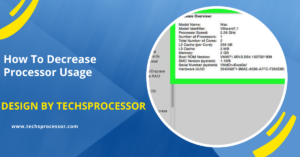How Many Pins In i7 Processor – A Comprehensive Guide!
Intel i7 processors typically have between 1,151 and 1,200 pins, with the exact count varying by model and generation.
In this comprehensive guide, we will delve deep into the world of Intel i7 processors, exploring their architecture, evolution, and the significance of their pin count.
Introduction:
Intel’s i7 processors have long been the gold standard for high-performance computing. These processors are at the heart of many powerful desktops and laptops, offering impressive processing power for a wide range of tasks, from gaming to content creation. One aspect of these processors that often raises questions is the number of pins they have.
Understanding Processor Architecture:

Before diving into the specifics of Intel i7 processors, it’s essential to understand the basics of processor architecture. A processor is essentially the brain of a computer, responsible for executing instructions and performing calculations. Modern processors consist of millions, if not billions, of transistors that work together to process data.
Evolution of Intel i7 Processors:
The Intel i7 processor lineup has seen several generations, each bringing significant improvements in performance and efficiency. The first i7 processors were introduced in 2008, based on the Nehalem microarchitecture.
Over the years, Intel has continued to refine its processor technology, with each new generation offering better performance and new features.
Intel i7 Processor Specifications:
The specifications of an Intel i7 processor can vary depending on the specific model and generation. However, there are some common features that are found in most i7 processors. These include:
- Multiple cores and threads: i7 processors typically have four or more cores, allowing them to handle multiple tasks simultaneously. Hyper-Threading technology further enhances multitasking performance by allowing each core to handle two threads.
- Turbo Boost: Intel’s Turbo Boost technology dynamically increases the processor’s clock speed to deliver extra performance when needed. This allows i7 processors to deliver excellent performance in demanding applications.
- Cache: i7 processors come with a large cache memory, which helps to speed up data access and improve overall performance.
- Integrated graphics: Many i7 processors come with integrated graphics, eliminating the need for a separate graphics card for basic tasks.
Pin Count of Intel i7 Processors:

The number of pins in an Intel i7 processor can vary depending on the specific model and generation. However, most i7 processors have between 1,151 and 1,200 pins.
The exact pin count is determined by the processor’s socket type, which is the physical interface between the processor and the motherboard.
Significance of Pin Count:
The pin count of a processor is crucial for compatibility with motherboards. Motherboards are designed to accept specific socket types, each with a corresponding pin count. Using a processor with the wrong pin count for your motherboard will result in incompatible components.
Compatibility Considerations:
When upgrading your processor, it’s essential to check the compatibility of the new CPU with your existing motherboard.
If the pin count or socket type differs, you may need to replace the motherboard to accommodate the new processor.
FAQ’s
1. What is the architecture of Intel i7 processors?
Intel i7 processors are the brain of a computer, executing instructions and calculations using millions of transistors.
2. How has the Intel i7 processor lineup evolved?
The lineup has seen several generations, starting with Nehalem in 2008, and each new generation offers better performance and features.
3. What are some common features of Intel i7 processors?
They typically have multiple cores and threads, support Turbo Boost technology, come with a large cache, and may have integrated graphics.
4. What is the significance of the pin count in Intel i7 processors?
The pin count determines compatibility with motherboards, as each socket type requires a specific pin count.
5. How can the pin count affect processor upgrades?
If the pin count or socket type of the new processor differs from the motherboard, the motherboard may need to be replaced.
6. What is the importance of understanding the pin count of Intel i7 processors?
It ensures compatibility with motherboards, preventing issues with incompatible components.
7. Are there variations in pin count among different models and generations of Intel i7 processors?
Yes, the pin count can vary, so it’s important to check the specific model’s specifications.
8. Can Intel i7 processors be used for gaming and content creation?
Yes, i7 processors are well-suited for these tasks, offering impressive performance.
9. What should users consider when choosing an Intel i7 processor?
They should assess their needs, budget, and future upgrade plans to select the right processor.
10. How can users ensure compatibility when upgrading their Intel i7 processor?
By checking the pin count and socket type of the new processor against the motherboard specifications.
Conclusion
Intel i7 processors are a powerhouse of performance, offering impressive processing power for a wide range of tasks. Understanding the pin count of these processors is essential for ensuring compatibility with your motherboard. By following the guidelines outlined in this guide, you can confidently choose the right Intel i7 processor for your needs and build a high-performance computing system that meets your requirements.





Post Comment